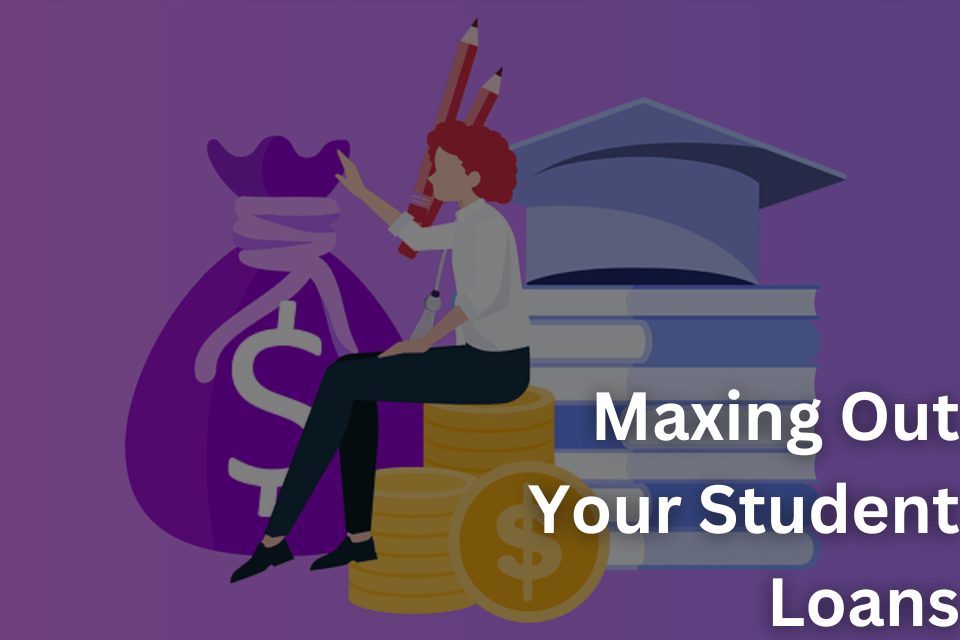As a student, one of the most important things you need to know is how much you can borrow in student loans. The cost of college has been rising for decades, and student loan debt is now a major concern for many graduates. In this article, we’ll take a look at the maximum amount of student loan debt you can take on and what you need to know to make the most of your financial aid options.
Federal Student Loan Limits
The federal government sets limits on how much you can borrow in student loans each academic year. These limits vary depending on your year in school and whether you’re considered a dependent or independent student. For example, for the 2021-2022 academic year, dependent students can borrow up to $5,500 for their first year of college, $6,500 for their second year, and $7,500 for their third and fourth years. Independent students can borrow up to $9,500 for their first year, $10,500 for their second year, and $12,500 for their remaining years.
It’s important to note that these limits are for Direct Subsidized and Unsubsidized Loans only. There are additional loan options available such as Direct PLUS Loans for parents and graduate students.
Aggregate Loan Limits
In addition to the annual loan limits, there are also aggregate loan limits, which is the total amount of money you can borrow over the course of your college career. For dependent undergraduate students, the aggregate loan limit is $31,000, while independent undergraduate students can borrow up to $57,500. Graduate students have a much higher aggregate loan limit of $138,500.
It’s important to keep in mind that these aggregate limits include all federal student loans, not just Direct Subsidized and Unsubsidized Loans.
How to Maximize Your Financial Aid
While it may be tempting to borrow the maximum amount of student loans each year, it’s important to remember that you’ll have to pay back the loans with interest. Therefore, it’s best to only borrow what you need to pay for your education.
One way to maximize your financial aid is to apply for scholarships and grants. These types of financial aid don’t have to be repaid, so they can help you reduce the amount of student loans you need to borrow.
Another way to maximize your financial aid is to work while you’re in school. Part-time jobs and internships can help you earn money to pay for your education, which can reduce the amount of student loans you need to borrow.
Repaying Your Student Loans
Once you graduate, you’ll have to start repaying your student loans. The good news is that there are several repayment plans available, so you can choose one that fits your budget.
For example, the standard repayment plan has a fixed monthly payment for up to 10 years, while the income-driven repayment plans base your monthly payment on your income.
It’s also important to keep in mind that you may be eligible for loan forgiveness programs, such as the Public Service Loan Forgiveness Program, which can forgive a portion of your student loan debt if you work in certain public service jobs.
Conclusion
Taking on student loan debt is a big decision, and it’s important to understand the maximum amount you can borrow and how to make the most of your financial aid options. By keeping these limits in mind and maximizing your financial aid, you can ensure that you’re borrowing only what you need to pay for your education. Additionally, by understanding the various repayment plans and loan forgiveness options, you can make a plan to pay back your loans in a way that works for your budget.
It’s also important to remember that student loan debt is long-term financial commitment and it’s important to consider the long-term implications of taking out student loans. However, with the right planning and budgeting, you can ensure that your student loan debt is manageable and that it doesn’t hold you back from achieving your financial goals.
In conclusion, it’s important to understand the maximum amount you can borrow in student loans, as well as how to maximize your financial aid options. By keeping these limits in mind and making a plan for repayment, you can ensure that your student loan debt is manageable and that it doesn’t hold you back from achieving your financial goals.

